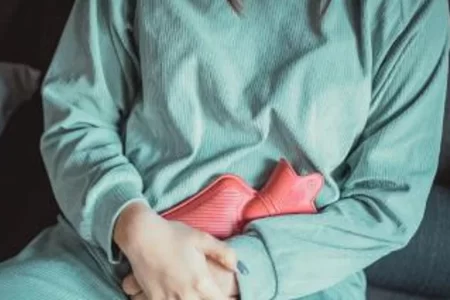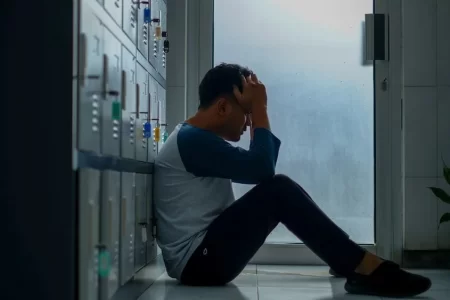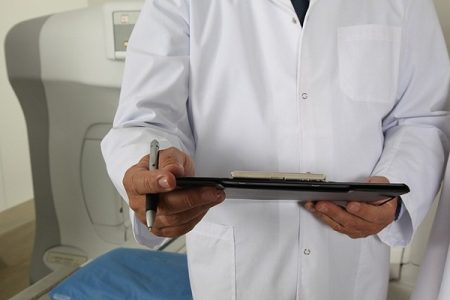Can kids get hemorrhoids?
Hemorrhoid refers to a medical condition of swollen and inflamed veins in the anus and lower rectum. It can be found inside and outside of the body. Hemorrhoids (Piles) found inside the body are called internal hemorrhoids and those found outside the body are called external hemorrhoids.
Internal hemorrhoid is found inside the anus and at the beginning of the rectum. It is characterised by small, swollen veins in the wall of the anus. They can also bulge out under the influence of pressure.
External hemorrhoids can feel like bulges at the anal opening and may hang outside of the anus. When irritated and inflamed, they can itch and even bleed. Read about haemorrhoids overview.
More: What are bleeding haemorrhoids ?
What causes Hemorrhoids in Children (Toddler Hemorrhoids or Kids Hemorrhoids)?
There are many things that can cause hemorrhoids in children, babies, and toddlers. Examples include:
- Children often sit for long periods of time on hard wooden stools.
- Sitting on the toilet for a long time (more than 10 minutes). Long times on the pot lead to blood collection and stagnation in the pelvic area.
- Straining when passing stool usually due to constipation and digestive problems can cause hemorrhoids. This causes pressure in the anus which aggravates piles.
- Not following a good meal regimen, failing to adhere to a healthy diet, consuming less water and lesser amount of fibrous fruits.
- In certain situations, intense and regular tantrums of the kid that follow up with a lot of crying can also result in piles. In a space of intense stress and crying, blood rushes towards the pelvic area and increases pressure on the abdomen from within. This blood stays stagnated in the area of the rectum.
- A current case or a history of piles among any or both parent can cause piles in a kid due to hereditary reasons as it is considered a risk factor.
- If the colon is rather inflamed due to various other medical conditions.
- Formation of a tumor in the colon can result in stagnation of blood which results in piles.
- An infected large intestine can further aggravate the rectal area, leading to the formation of piles.
- A less active child, who spends most of his time sitting around, does have great chances of getting piles.
What are the symptoms of hemorrhoids among children?
The symptoms of hemorrhoids may differ from one child to another. Mostly, children may experience the following symptoms:
Bleeding from the rectum
One of the most common symptoms of hemorrhoids in children is bleeding from the rectum. This occurs when a blood vessel in or around the anal canal is ruptured. The blood that comes out is often bright red and it comes typically during bowel movements.
Chronic itching in the anus
Anal itching is another common symptom. Hemorrhoids often secrete mucus that when combined with stool from the bowel movements, create a chronic itch that children cannot ignore. Read about itchy haemorrhoids.
Discomfort while moving
General discomfort is a classic symptom. Typically, the pain and discomfort come from sitting for long periods, or during bowel movements.
Shyness or fear from going to the bathroom
Children often shy away from going to bathroom or are afraid of it because they want to avoid hemorrhoids pain.
A lump of mass near the anus
A large mass occurs near the opening of the anal canal and can be felt easily.
More: Lump near anus
What is the procedure for the diagnosis of hemorrhoids in children?
The presence of blood in the stool is not the only thing which determines the presence of hemorrhoids. It may indicate other digestive disorders too. Therefore, a thorough evaluation and proper diagnosis is very important. Diagnosing hemorrhoids may include the following procedures:
Physical examination
In this examination, the doctor may check the anus and rectum of the child and look for swollen blood vessels that indicate hemorrhoids.
Digital rectum examination (DRE)
Your doctor may insert a gloved, lubricated finger into the rectum to check for any kind of abnormalities that may be indicative of hemorrhoids.
Anoscopy
A hollow tube with an attached light at one end is inserted into the anus to look inside.
Sigmoidoscopy
A short, flexible, lighted tube (sigmoidoscope) is inserted into the intestine through the rectum. It is helpful in identifying the causes of diarrhea, abdominal pain, constipation, abnormal growths, and bleeding.
Colonoscopy for hemorrhoids in children
It involves inserting a long, flexible, lighted tube (colonoscope) through the rectum up into the colon. The doctor then looks inside the lining of the colon, removes tissue for further examination, and possibly treats some problems that are discovered.
More: What Are The Different Medicines For Hemorrhoids?
More: Hemorrhoids VS Colon Cancer – Is It Hemorrhoids or Colon Cancer?
How is hemorrhoid in children treated?
The treatment of piles in kids is totally different from that of adults. The treatment of children for hemorrhoids depends on various factors like:
- The child’s age, overall health, and medical history
- The extent of the condition
- The child’s tolerance of specific medicines, procedures or therapies
- Expectations of the parents
- Family’s opinion or preference
Medical treatment of hemorrhoids in children aims at relieving symptoms and may include the following:
Sitz bath
Sitting in plain, warm water in the tub several times a day can give some relief from the condition.
Ice packs
Ice packs are recommended to reduce swelling so that the child may get some comfort.
Hemorrhoidal creams or suppositories
Creams are recommended by a child doctor to apply at the site in order to get some relief.
Stool softeners
A child’s physician may recommend increasing fiber, fluids or laxatives to soften stools. A softer stool lessens pressure on hemorrhoids caused by straining. Good sources of fiber include fruits, vegetables, and whole grains. If natural methods are not found effective then bulk stool softeners or fiber supplements are recommended such as:
- Psyllium (Metamucil)
- Methylcellulose (Citrucel)
Surgery for hemorrhoids in children
In some serious cases, hemorrhoids are treated surgically. Various surgical techniques are used to remove or reduce internal and external hemorrhoids. These may include the following:
Rubber band ligation
A rubber band is placed around the base of hemorrhoid inside the rectum to cut off circulation to hemorrhoid. Hemorrhoid then gradually shrinks and withers away within a few days.
Sclerotherapy
A chemical solution is injected around the blood vessel to shrink a hemorrhoid.
Electrical or laser coagulation or infrared photocoagulation
Some special devices are used to burn hemorrhoidal tissue.
Hemorrhoidectomy
The surgical procedure is carried out to permanently remove the hemorrhoids.
How can hemorrhoids in children be prevented?
The prevention methods of hemorrhoids in children may include:
Consuming fiber foods
Include foods rich in fiber and dietary fiber in children’s diet. Foods such as vegetables, fruits, whole grain bread and bran are very good. These products are designed to stimulate the contraction of the intestine and prevent accumulation of faeces in the rectum.
Good eating habits
Let the child eat often, but small portions. Avoid salty, spicy, fried, smoked food.
Consuming Dairy products
Include milk products in the diet of kids. They normalize the intestinal flora and eliminate constipation.
Maintain good weight
Overweight children are several times more prone to hemorrhoids. Follow your baby’s weight to prevent hemorrhoids in a baby (baby hemorrhoids).
An adequate amount of water
The child must drink adequate amounts of plain water. Tea, juice or aerated drinks should be avoided.
Limit child’s time on the computer and TV
A sedentary lifestyle is one of the main causes why hemorrhoids in children are so common. Try as much as possible to walk, engage in joint business or, if the baby is older, give it to the sports section (with doctor’s permission).







